So, you’re getting ready for your first horseback riding lesson? That’s awesome! Whether you’re a complete beginner or have had some experience with horses before, it’s always good to be prepared. In this article, we’ll dive into all the things you need to know before hopping on a horse for the first time. From what to wear and how to approach the horse, to basic riding techniques and safety precautions, we’ve got you covered. So, saddle up and get ready to learn more in this article!
When it comes to horseback riding, there’s a lot to consider. First and foremost, let’s talk about what to wear. You definitely want to dress appropriately for this activity. Wearing a comfortable pair of pants such as jeans or leggings is a good idea, as they allow for easy movement. It’s also important to wear sturdy shoes with a heel, as they provide better grip in the stirrups. Apart from clothing, you should also think about safety gear. A properly fitted helmet is a must, as it protects your head in case of a fall. Additionally, wearing gloves can help provide a better grip on the reins and protect your hands. These are just a few tips to get you started, but there’s so much more to learn about horseback riding. Stay tuned for our upcoming articles where we’ll dig deeper into specific techniques, horse care, and more.
Preparing for Your First Horseback Riding Lesson
Horseback riding is a thrilling and rewarding activity that allows you to connect with nature and experience the beauty of these majestic creatures. Whether you have always had a fascination with horses or are simply looking for a new and exciting hobby, taking your first riding lesson is an important step in your equestrian journey. To ensure a successful and enjoyable experience, it’s crucial to be prepared and well-informed. In this article, we will guide you through the essential steps of preparing for your first horseback riding lesson.
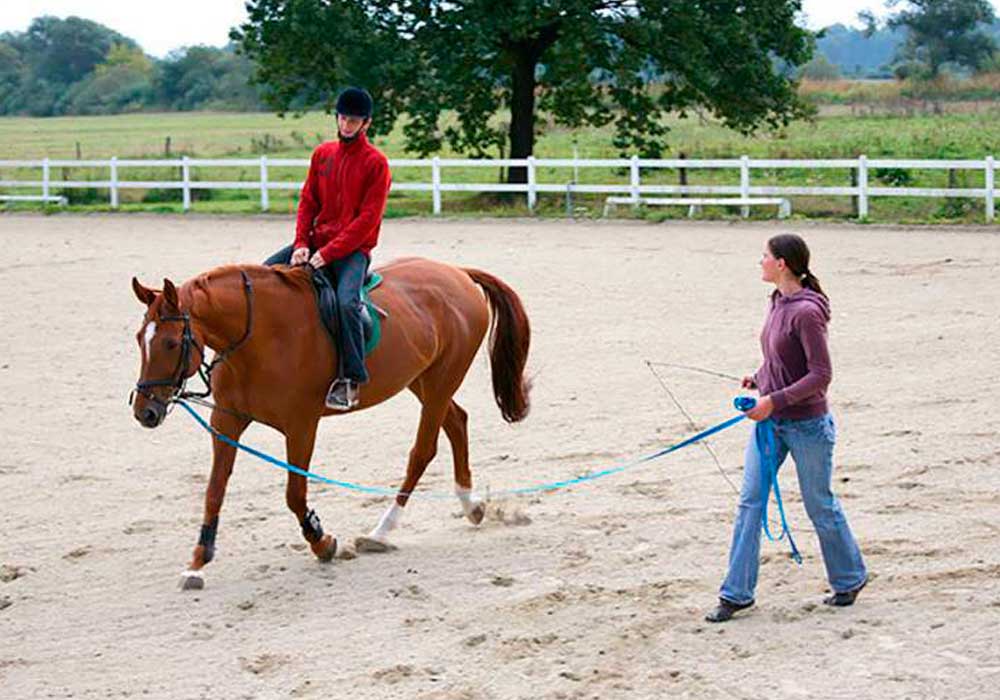
Researching Riding Schools in Your Area
Before diving into the world of horseback riding, it’s essential to find a reputable riding school in your area. Researching various schools will help you choose one that aligns with your goals and provides a safe and supportive learning environment. Start by asking for recommendations from friends, family, or fellow horse enthusiasts. You can also search online for riding schools and read reviews from past students.
When evaluating riding schools, consider factors such as the school’s reputation, safety record, and the experience and qualifications of its instructors. Visit the school’s website or contact them directly to gather more information about their lesson programs, pricing, and scheduling options. By doing thorough research, you can select a riding school that meets your needs and offers a positive learning atmosphere.
Reviewing School Facilities and Equipment
Once you have narrowed down your options to a few riding schools, it’s crucial to take a closer look at their facilities and equipment. The condition of the school’s stables, arenas, and riding equipment can greatly impact your learning experience. Visit the schools you are interested in to assess the cleanliness and overall maintenance of their facilities.
Check if the riding school provides well-cared-for horses that are suitable for beginners. It’s important to ensure the horses are of a suitable size and temperament for beginners to learn on. Additionally, examine the condition of the riding gear such as saddles, bridles, and protective equipment. The quality and suitability of the equipment can greatly enhance your riding experience and contribute to your safety.
Assessing Instructor Experience and Qualifications
The instructor you choose will play a significant role in shaping your riding journey. It’s essential to select an instructor who has extensive experience and a solid understanding of teaching beginners. Look for instructors who hold certifications from recognized equestrian organizations such as the United States Hunter Jumper Association (USHJA) or the British Horse Society (BHS).
When meeting a potential instructor, discuss your goals and expectations. A good instructor should be patient, encouraging, and able to adapt their teaching style to suit your individual needs. Ask about the instructor’s teaching approach and how they prioritize safety during lessons. A knowledgeable and experienced instructor will not only help you develop riding skills but also instill confidence and ensure your riding experience is enjoyable.
Understanding Basic Horse Care
Before hopping on a horse, it’s important to understand the basics of horse care. This knowledge will not only help you bond with your horse but also contribute to its well-being. Here are some key areas to focus on:
Learning About Horse Behavior and Body Language
Knowing how horses communicate and interpret their surroundings is essential for building a strong partnership with your horse. Horses use body language and subtle cues to express their emotions and intentions. Learning to read their behavior can help you understand their moods, needs, and potential reactions. Look for resources such as books, online articles, or even local workshops that delve into horse behavior and body language.
Feeding and Grooming Basics
Proper nutrition and grooming are fundamental aspects of horse care. Familiarize yourself with the types of feed and forage horses require, as well as their feeding schedule. Additionally, learn about the importance of grooming, including brushing the horse’s coat, cleaning hooves, and maintaining their mane and tail. Understanding these basics will not only contribute to your horse’s overall health but also create a bond of trust between you and your equine partner.
Recognizing Common Health Issues
Just like any other living being, horses can experience various health issues. Learning to recognize common ailments such as colic, lameness, and respiratory problems will allow you to respond promptly and seek professional veterinary assistance when needed. Educate yourself about preventive measures, such as regular vaccinations and deworming, to ensure your horse remains healthy and happy.
Getting Familiar with Riding Gear
Before your first riding lesson, it’s important to understand the various pieces of riding gear and their purpose.
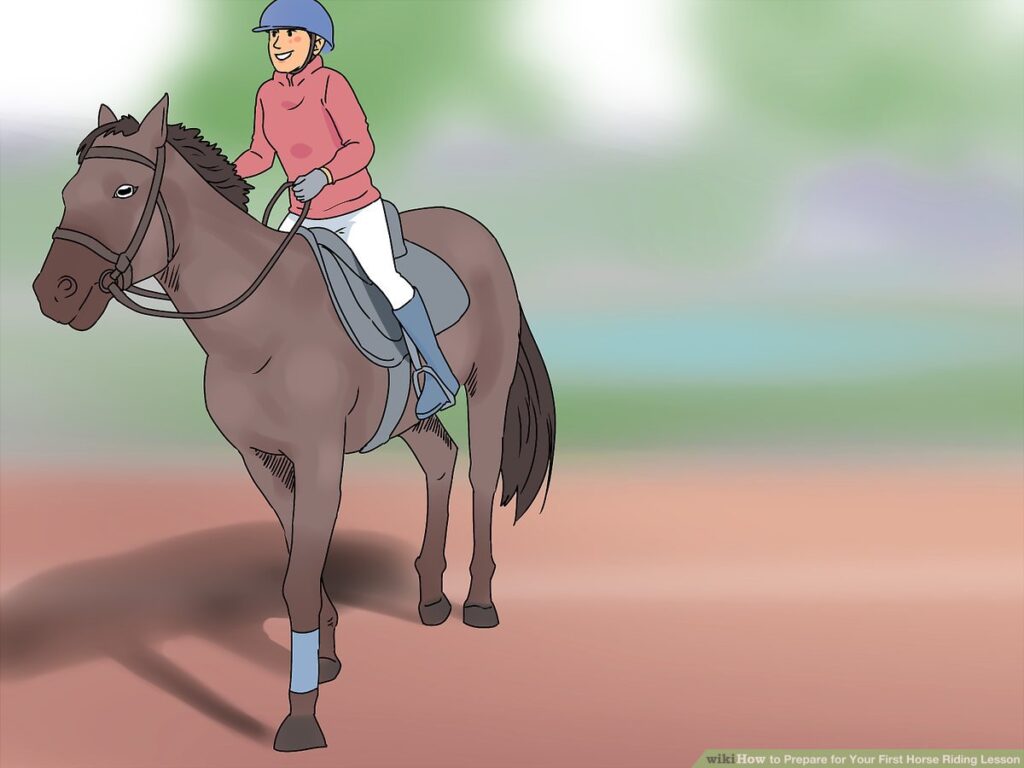
Exploring Different Types of Riding Helmets
A riding helmet is perhaps the most crucial piece of equipment to ensure your safety during horseback riding. There are different types of helmets designed specifically for equestrian activities. It’s important to find a helmet that fits properly and meets safety standards established by recognized organizations, such as the American Society for Testing and Materials (ASTM) or the European Union Safety Certification (CE).
Understanding the Purpose of Riding Boots and Chaps
Riding boots and chaps provide protection, support, and proper grip while riding. Riding boots are designed to have a slight heel, providing stability and preventing the foot from slipping through the stirrup. Chaps, on the other hand, protect the legs from rubbing against the saddle and provide additional grip. Invest in a pair of well-fitted riding boots and chaps to ensure comfort and safety during your lessons.
Choosing the Right Riding Apparel
While it’s important to wear suitable riding gear, especially for safety purposes, there is no need to invest in expensive riding apparel right from the start. Opt for comfortable, form-fitting clothing that allows freedom of movement. Avoid loose or baggy attire that could get caught on the saddle or equipment. Ideally, wear long pants and avoid open-toed shoes or sandals. As you progress in your riding journey, you can invest in specialized riding apparel to enhance your comfort and performance.
Mounting and Dismounting Techniques
Mounting and dismounting a horse correctly are essential skills that ensure your safety and the horse’s well-being.
Learning How to Approach and Stand Beside the Horse
Approaching a horse correctly is important to establish trust and to avoid startling or spooking the horse. Approach the horse from its side, at about a 45-degree angle, while speaking softly and gently. Avoid sudden movements or loud noises that might startle the horse. Standing beside the horse, maintain a safe distance to allow the handler or instructor to work around the horse comfortably.
Mastering Proper Foot and Hand Placement
When preparing to mount, position yourself on the left side of the horse. Place your left foot in the stirrup while holding onto the front of the saddle with your left hand. Use your right hand to gently guide and support yourself onto the horse. Maintain a firm but gentle grip on the reins throughout the mounting process.
To dismount, reverse the process. Release the reins, swing your right leg over the horse’s back, and gently lower yourself to the ground. Always dismount on the left side of the horse.
Practicing Safe Mounting and Dismounting
Remember to mount and dismount slowly and deliberately, ensuring both you and the horse are balanced and comfortable throughout the process. Avoid sudden movements or mounting from unstable positions, as this could startle the horse or compromise your safety. If you are unsure or have difficulty, seek the guidance of your instructor or a knowledgeable handler to ensure a safe mounting and dismounting experience.
Developing a Strong Seat and Balance
Developing a strong seat and balance is crucial for maintaining stability and control while riding.
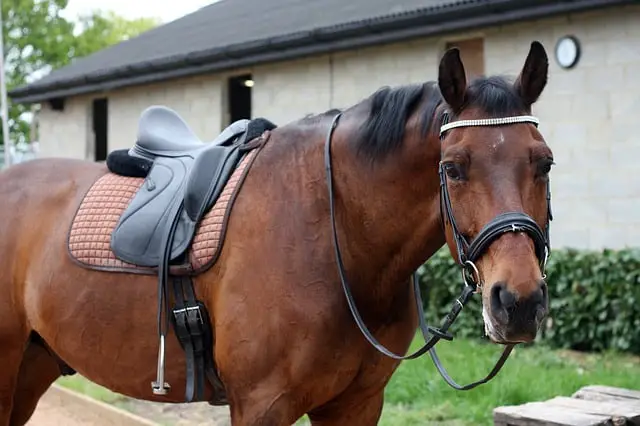
Understanding the Correct Riding Posture
A correct riding posture involves maintaining a straight line from your ear, shoulder, hip, and heel. Sit tall, with relaxed shoulders, and avoid leaning forward or slouching. Distribute your weight evenly on both seat bones, and keep your heels down and legs relaxed.
Practicing Balance Exercises on and off the Horse
Building balance is essential for developing a secure and effective seat. Practice exercises such as standing on one leg, yoga poses like the tree pose, and core-strengthening exercises off the horse. Engaging in activities such as Pilates or yoga can greatly improve your balance and stability in the saddle.
Building Core Strength and Stability
A strong core is essential for maintaining proper posture and stability while riding. Engage in exercises that target your abdominal and back muscles to develop a solid foundation. Planks, sit-ups, and back extensions are just a few examples of exercises that can strengthen your core and improve your riding posture.
Basic Riding Commands and Rein Techniques
Learning basic riding commands and rein techniques is crucial for effective communication with your horse.
Learning How to Use Leg and Seat Aids
Leg aids are used to communicate with the horse and give cues for direction, speed, and transitions. Gentle pressure from your calves can ask the horse to move forward or increase speed, while squeezing or lifting your legs creates a bend or turn. Seat aids involve subtle shifts in your weight and posture to communicate with the horse. Practice using your legs and seat aids in coordination with one another to achieve desired responses from your horse.
Understanding Different Rein Holds
Rein holds refer to the various ways you can hold the reins that allow you to communicate with the horse’s mouth. The most common rein hold for beginners is the “direct rein” or “basic rein.” This technique involves separate holds of each rein in each hand, with a slight bend in the wrist. The reins should be held at an even length and kept at an appropriate tension for clear communication.
Practicing Walk, Trot, and Canter Transitions
Transitions between gaits are an essential part of riding and require precise timing and aids. Start by mastering the walk and practice transitioning to the trot and canter. Focus on clear and subtle aids to achieve smooth and balanced transitions. As you progress, you will refine your aids and enhance your ability to communicate with your horse effectively.
Navigating Turns and Circles
Mastering turns and circles is crucial for maintaining balance, rhythm, and control while riding.
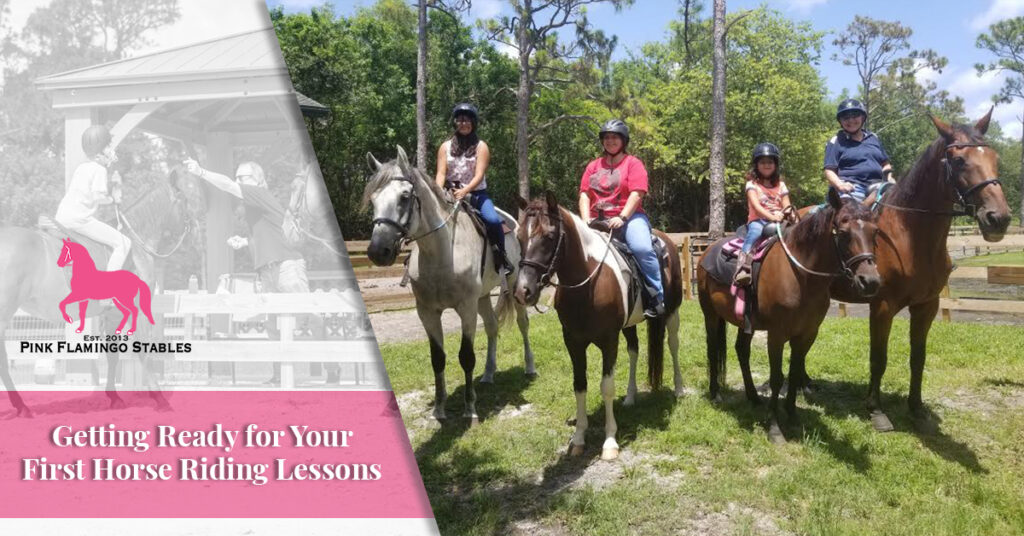
Executing Proper Turning Aids and Techniques
To execute a turn, use a combination of leg, seat, and rein aids. Apply gentle pressure with your inside leg to ask the horse to turn, while using your inside rein for guidance. Maintain a light contact with the outside rein to support the turn. Ensure that your weight is shifted slightly in the direction of the turn and that your shoulders are aligned with the horse’s shoulders.
Mastering Circle Sizes and Shapes
Circles are a fundamental exercise for building balance, rhythm, and suppleness. Begin by practicing large circles, gradually moving on to smaller ones. Focus on maintaining a consistent bend and rhythm throughout the circle, and adjust your aids accordingly. Practice varying the size and shape of your circles to challenge yourself and improve your horse’s flexibility.
Maintaining Proper Balance and Rhythm
Balance and rhythm are key elements for successful turns and circles. Maintain a balanced posture, with your weight centered and aligned with the horse’s movement. Focus on riding with a consistent and even rhythm, matching the horse’s strides. Regular practice and feedback from your instructor will help you develop a strong sense of balance and rhythm in your riding.
Building Confidence in the Saddle
Building confidence is a gradual process that requires patience, practice, and a positive mindset.
Overcoming Fear and Anxiety
If you experience fear or anxiety while riding, it’s important to address these emotions and work on overcoming them. Start by acknowledging your fears and understanding their roots. Communicate openly with your instructor and seek their guidance in building your confidence gradually. Set small, achievable goals and celebrate each milestone along the way. Take your time and remember that building confidence is a personal journey.
Developing Trust and Communication with the Horse
Building a bond of trust and understanding with your horse is vital for a successful riding experience. Spend time getting to know your horse outside of lessons, observing their behavior, and interacting with them. Engage in groundwork exercises, such as leading, lunging, or grooming, to create a connection. Treat your horse with kindness, respect, and consistency to foster trust and a healthy partnership.
Taking Small Steps towards Challenges
As you progress in your riding journey, you will encounter new challenges and opportunities for growth. Approach these challenges gradually, breaking them down into smaller, manageable steps. Celebrate each accomplishment, no matter how small. Remember that progress is a personal journey, and every step forward is a testament to your determination and dedication.
Learning to Control Speed and Stop
Learning how to control your horse’s speed and execute proper stops is essential for maintaining safety and control.
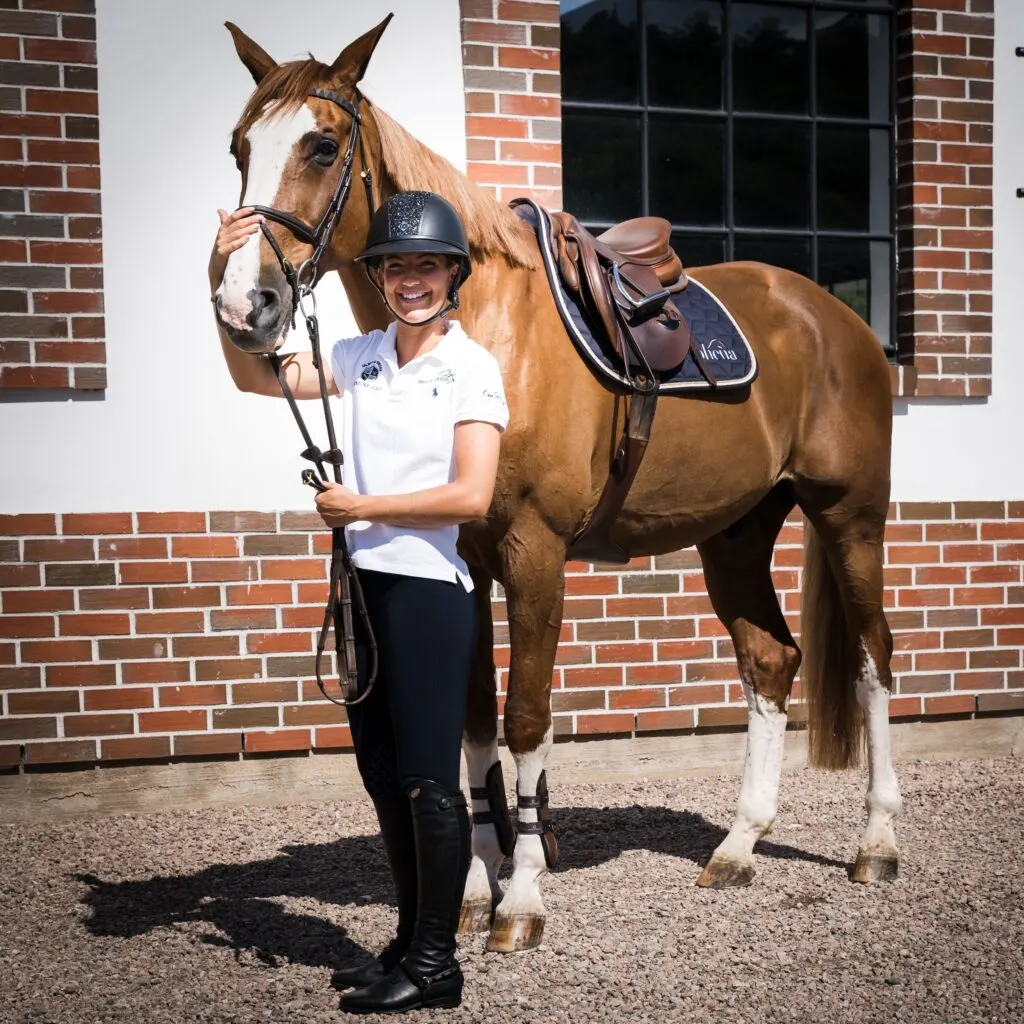
Practicing Half-halts and Transitions
The half-halt is a fundamental technique used to rebalance the horse, prepare for transitions, or modify the speed within a gait. It involves a subtle combination of seat, leg, and rein aids to ask the horse to slow down or rebalance while maintaining the same gait. Practice half-halts and transitions between gaits to develop control and adjustability in your riding.
Understanding the Importance of Rein and Seat Aids for Speed Control
Rein and seat aids play a crucial role in controlling the horse’s speed. Learn to apply gentle pressure on the reins with a supporting leg aid to ask the horse to slow down or halt. Experiment with your seat and posture, using subtle shifts in weight to communicate your desired speed to the horse. Remember to be patient and consistent with your aids, rewarding the horse for responding correctly.
Mastering Emergency Stops
As a rider, it’s essential to be prepared for unexpected situations that may require an emergency stop. Practice emergency stops under the guidance of your instructor to develop the necessary skills and confidence to execute them safely. Remember to use a combination of seat, leg, and rein aids to bring the horse to a controlled stop while maintaining your balance and composure.
Navigating Riding Obstacles and Obstructions
Conquering riding obstacles and navigating challenging terrain is a thrilling aspect of horseback riding.
Riding Ground Poles and Cavaletti
Ground poles and cavaletti exercises are commonly used to improve a horse’s balance, coordination, and scope. Practice riding over ground poles set at varying distances and heights to challenge yourself and your horse. Start with low heights and gradually increase the complexity of the exercises. This will not only enhance your horse’s athleticism but also improve your ability to navigate obstacles effectively.
Riding through Trail Obstacles
Trail riding allows riders to explore different terrains and natural obstacles. Practice riding through various trail obstacles such as water crossings, fallen logs, or narrow pathways. Focus on maintaining your balance and rhythm while guiding your horse through the obstacles. Always prioritize safety and take the time to familiarize yourself with the obstacles before attempting them.
Negotiating Jumps and Cross-country Courses
Jumping is an exhilarating discipline within horseback riding. Mastering the approach, takeoff, landing, and recovery is essential for a successful jump. Start with small jumps under the guidance of a qualified instructor and gradually progress to more complex jumping exercises and courses. Always prioritize safety and ensure you and your horse are adequately prepared before attempting challenging jumps or cross-country courses.
Understanding Basic Jumping Techniques
Jumping requires skill, precision, and a solid understanding of basic jumping techniques.
Learning about Different Types of Jumps
There are various types of jumps commonly found in equestrian jumping. Familiarize yourself with different types, such as verticals, oxers, and combinations. Learn about the elements that make up a jump, including the width, height, and spread. Understanding these aspects will allow you to navigate jumps effectively and confidently.
Mastering the Approach and Takeoff
A successful jump starts with a well-executed approach and takeoff. Establish a balanced and rhythmical approach to the jump, maintaining a steady pace and straight line. As you near the jump, maintain a soft contact with the reins and support your horse with a supportive leg aid. Lift your eyes to focus on the intended target and allow the horse to takeoff naturally.
Practicing Landing and Recovery
Once your horse clears the jump, focus on a correct and balanced landing. Allow your horse to stretch its neck and maintain a forward momentum. Maintain a balanced position and prepare for any subsequent maneuvers or turns required. Practice riding through combinations of jumps to improve your ability to recover and maintain control after landing.
Trail Riding and Outdoor Riding Skills
Trail riding offers a unique opportunity to explore nature and experience the thrill of riding in different environments.
Navigating Trails Safely
Trail riding comes with its own set of challenges and considerations. Always prioritize safety by selecting trails suitable for your skill level and experience. Familiarize yourself with the trail map, potential hazards, and the terrain you will encounter. Observe trail etiquette, such as yielding to hikers and bikers, and maintain control of your horse at all times.
Managing Various Terrains and Conditions
Different terrains and weather conditions require adjustments in your riding approach. Practice riding on varied terrain, such as uphill, downhill, or uneven surfaces, to improve your horse’s balance and confidence. Adjust your position and weight distribution accordingly to maintain stability and support your horse. Similarly, familiarize yourself with riding in different weather conditions to ensure both you and your horse are comfortable and safe.
Preparing for Longer Riding Adventures
As your riding skills progress, you may consider embarking on longer riding adventures or even multi-day trail rides. Planning and preparation are essential for such adventures. Gradually increase the duration and distance of your rides, ensuring your horse is properly conditioned. Pack necessary supplies such as water, snacks, a first aid kit, and appropriate clothing. Consult with experienced riders or guides for advice on planning and executing longer riding adventures.
Caring for Your Horse after Riding
Caring for your horse after each riding session is as important as the time spent in the saddle.
Cooling Down and Stretching the Horse
After a ride, allow your horse to cool down by walking for at least 10-15 minutes. This helps regulate the horse’s body temperature and prevents muscle stiffness. After cooling down, engage in gentle stretching exercises to improve the horse’s flexibility and prevent muscle tension. Consult with your instructor or a knowledgeable equestrian professional for guidance on appropriate stretching exercises.
Proper Untacking and Grooming
Remove your horse’s tack in a careful and organized manner, ensuring you do not rush or make sudden movements that could startle the horse. Once untacked, groom your horse thoroughly to remove sweat, dirt, and debris from their coat. Brush their mane and tail, clean their hooves, and check for any signs of discomfort or injury. Grooming not only keeps your horse looking and feeling their best but also allows you to observe their overall health and well-being.
Understanding Post-Ride Health Considerations
Being attentive to your horse’s health after a ride is crucial. Monitor their body temperature, pulse rate, and respiratory rate, as these can indicate any physical stress or discomfort. Offer water to keep your horse hydrated and observe their appetite and digestion. If you notice any unusual behaviors or signs of distress, consult with a veterinarian to ensure your horse’s health and well-being.
Conclusion
Preparing for your first horseback riding lesson requires time, research, and dedication. By carefully selecting a reputable riding school, familiarizing yourself with horse care basics, and understanding riding equipment and techniques, you are setting yourself up for a successful and enjoyable riding experience. Remember to approach challenges with patience, build trust with your horse, and prioritize safety at all times. Riding is a lifelong journey, and each step along the way brings you closer to the joy and fulfillment of horseback riding.
Reflect on your experiences and progress, celebrating each milestone achieved. Continue your education and skill development by seeking additional lessons or clinics, attending equestrian events, or even considering horse ownership in the future. Embrace the joy of horseback riding, the connection with these magnificent animals, and the endless adventures that lie ahead.
Happy riding!
Relevant Topics for Your Horseback Riding Blog
- How to Choose the Right Riding School for Kids
- The Benefits of Therapeutic Horseback Riding
- Riding Gloves: Why Are They Important?
- Understanding Bit Types and Their Effects on Horses
- The Role of Correct Saddle Fit in Horseback Riding
- Horse Care in Different Weather Conditions
- How to Develop a Strong Bond with Your Horse
- Overcoming Challenges in Horseback Riding
- Exploring Different Riding Disciplines
- The Positive Impact of Horseback Riding on Mental Health
- Tips for Preparing for a Horse Show
- Horseback Riding as a Fitness Activity
- Horse Trail Etiquette: Sharing Trails with Others
- Exploring Different Breeds of Horses
- Horseback Riding Safety Tips for Beginners
- The Importance of Regular Veterinarian Check-ups for Horses
- Horse Riding Vacations: Exploring New Destinations
- Dressage Basics: Understanding the Art of Horse Training
- The Role of Proper Nutrition in Equine Health
- Horseback Riding as a Therapeutic Activity for Children with Autism
These 20 topics cover a wide range of horseback riding-related subjects and can serve as a starting point for your blog content. Remember to research and gather reliable information about each topic to provide valuable and accurate content to your readers.